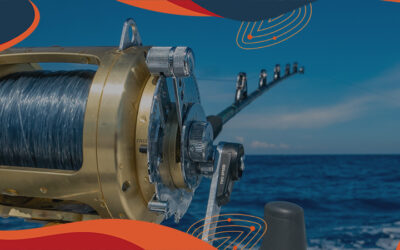TRANSCRIPTION OF EPISODE
Chris Battis: On this episode of Intent Topics, we’re going to talk about how knowing who you are selling to is more important than knowing what you are selling.
Chris Battis: All right. What’s up, Logan? How’s it going, buddy?
Logan Kelly: Hey, bro.
Chris Battis: Same old. Okay. Today we’re going to talk about knowing who you are selling to and how that is more important than knowing what you are selling. You down to jam on that?
Logan Kelly: Yeah, dude. Let’s do it.
Chris Battis: Cool. We’ve been talking about this a bit. We’ve been kind of outlining this a bit, but I think what we’ve come down to here is this is about go to market. I think where this conversation’s kind of started from is we talked a lot about target audience. We talk a lot about the right content to the right person. Et cetera. Then, when it comes time to onboard a new client, or iterate on how we’re doing with a client, we’re finding that a lot of businesses don’t know who their ideal customer is. Is that fair to say?
Logan Kelly: I think it’s like everybody can talk about, in a fairly squishy form, what [crosstalk 00:01:30] client profile is.
Chris Battis: Yeah. That’s fair.
Logan Kelly: But I think what we’re talking about, this is 2019. We can use data to define this. It’s never been easier to build a data-defined ICP. The value that that has when you’re building a go to market strategy, or you’re selling a new product, or you’re selling a product or service that you’re looking to boost, rolling that into the tacticians in the engine room of a sales organization or a marketing organization is unbelievably powerful. Otherwise, it’s all just guessing. That’s unacceptable in 2019.
Chris Battis: Well, yeah. When it comes down to legit creating a list to do targeted outreach to, you need some real criteria to work off of. You can’t just go off of Bob the baker persona that you built when you were building your blog strategy. This is legit. What accounts? What’s the industry? What’s the… Well, all the criteria you use when building a list.
Logan Kelly: Sure.
Chris Battis: What’s the target revenue size? What role within the companies? What technology that they’re using? Understanding that is required.
Logan Kelly: Right. Let me break it down a little bit. I’ve sat in a lot of marketing seminars where we talk about ideal client profile and that the guy running the thing, he feels really clever because he asks you, “What kind of car does your target prospect drive?” That’s all really cute. What did he eat for breakfast? All that kind of stuff.
Chris Battis: What magazine do they read?
Logan Kelly: Yeah. Okay. So, that’s great, but what the hell does that actually tell you about the target list that you’re going to build? It does not tell you anything. It tells you how you might communicate with that person, but persona and ICP need to be decoupled. They are two totally different things. One’s how you communicate. It has a weak pull on the content creation. But sales content should be created using, listen to, four C’s of sales content.
Logan Kelly: There’s a certain element of I don’t care what he ate for breakfast. What I care about is what does his firm look like on a firmographic, technographic, and then start getting into things a little bit more sophisticated like around intent data. The squishy stuff, I think, we have mounds of data. Go into Everstream or go into ZoomInfo and take that buyer persona and try to turn that into a strategy. It doesn’t work.
Chris Battis: Yeah. I almost feels like that squishy stuff is a way to get wheels in motion to be thinking about-
Logan Kelly: Yeah. It’s almost like-
Chris Battis: … how to approach that. Right?
Logan Kelly: Yeah.
Chris Battis: I think it’s good for like, oh, what blog post or e-books, or at a high level what contents the right content to create for this person to consume, but I think to be effective at what we’re doing was very specific data-driven outreach with very specific personalized content you have to go much deeper and you have to take the who you’re talking to a lot more seriously, just to even create the target list.
Logan Kelly: Yeah. Sure. So, okay, do I need a buyer persona to build that? I don’t know because if I know what software that person’s using, I know what content that person’s consuming already. I already know what content that person is consuming through intent data, so why do I care about the persona if I can reverse engineer what he is already reading and consuming? That’s what I’m trying to say here.
Logan Kelly: It’s like we spend a lot of time being comfortable with guessing. I think a lot of people do this. We feel comfortable spending a lot guessing what’s going on, but the real power is spending the time to break this down into real data and then engineering your content strategy and then engineering what your value prop is and all of that. That can be done through the tools that are available here today.
Chris Battis: I also think a challenge that’s similar is if you’re too many things to too many people, you can never get specific enough with-
Logan Kelly: Absolutely.
Chris Battis: … a list, who to be looking at, surging topics, what revenue size… it’s too big a needle in a haystack. I’m going to do the fishing analogy. I’m sorry. But if you can’t hone in on where to fish, it’s a very big ocean.
Logan Kelly: Yeah.
Chris Battis: I got a boat full of shit I could throw in the water, but if you don’t get specific, you’re never going to catch anything.
Logan Kelly: Yeah. It’s like point of the spear. You can stab a lot of different places, but it has to be specifically in the right spot and with that really sharp tip. It’s okay if you… for an agency, for example. Let’s say an agency because agencies are the biggest offenders of being generalists on the planet.
Chris Battis: Sure.
Logan Kelly: The industries that we work with that have chosen that specific vertical, that have created content that’s reverse engineered from what they are hearing on the street, not from what they think the person’s thinking because those are assumptions and that’s a different episode.
Logan Kelly: So, what’s really powerful is they pick this specific vertical or category and it’s okay to have six of those if you have the ability to back that up if you have a big enough content engine.
Chris Battis: Yeah. Mm-hmm (affirmative).
Logan Kelly: You get the point.
Chris Battis: Well, being the marketing guy in the group compared to the rest, we’re doing modeling and we’re trying to get very specific on who we want to sell to. The approach to me was kind of like, “Chris are you okay with this?” I’m like, “Absolutely. I want nothing more than to know specifically who you guys think it would be most effective to do our outreach so that I can back all the way into the exact content, done in the exact number of visits to our websites, converting, all of that. If I know exactly… and I’m not talking like what magazine and what car they drive… but exactly what this person over our target audience is, I’m happy.”
Logan Kelly: Right.
Chris Battis: Then, I can kick off. I can kick off the battle between marketing and sales because I know exactly what the right fit is.
Logan Kelly: Right. There is no battle.
Chris Battis: Exactly. [crosstalk 00:08:51]
Logan Kelly: It’s a battle of-
Chris Battis: The battle is there is no battle.
Logan Kelly: Yeah.
Chris Battis: Exactly.
Logan Kelly: But I think the piece is like how big of a vehicle are you trying to drive down the street and how big is the content engine of your company. The more verticals you’re in, the more places you need to stab, the more content you’re going to have to produce.
Chris Battis: Yeah. There’s only so much time in day too. Of course. You would think it’s attractive to be like, “Oh, we work for all businesses.” That actually sucks.
Logan Kelly: Yes.
Chris Battis: You got to hone in on it because you’ll never actually very specifically get good at that. We’ve kind of peaked and valleyed with this over the last year and a half. We’ve been like, “We can be effective for anyone.” That’s challenging because we have to learn every industry to do what we’re doing, get good at it. So, honing in on it’s been very beneficial to us.
Chris Battis: Then, we’re learning that we can hone in even more and even more and even more. So, that’s taught us how to do that well for our clients. You’re carrying that into onboarding and you’re pushing our clients, as you onboard them, to think more critically about that, right?
Logan Kelly: Well, that’s the thing. We knew this about our clients two years ago. We didn’t force ourselves to do it because there is an element of you need cash flow, you need to get the wheels, you need to get the engine started… what that… we’re using so many metaphors. Screw this. You need cash flow. You need to establish a fit. You need to make the mistakes and all this kind of stuff.
Logan Kelly: But when I’m working with a sophisticated company, a company that’s been around for a while or very talented agency or somebody who’s got a nice product or service, software, whatever it is… you’ve already got the thing. Now let’s put that aside and let’s figure out where you want to put it. From there, we can start to… once you have the talent or the product or the software, whatever it is, now you can start to skin it based on where you’re going to put it. If it’s going to go onto the savannah, make it look like a lion. Whatever.
Chris Battis: Yeah. Jeep dealer past life. There it is. Savannah, no, or is that Sahara? Yeah. I get you.
Logan Kelly: Sahara. Yeah.
Chris Battis: There you go.
Logan Kelly: That’s what I’m saying is like knowing who you’re going to sell to doesn’t mean just like I want to be in this industry. You need to have something. That’s kind of the table stakes. From there, let’s talk about the value prop because you can be different things to different people, but you can be everything to everyone. That’s never going to work.
Chris Battis: Yes, that’s what I was trying to-
Logan Kelly: That’s what we push our clients to do. Yeah.
Chris Battis: … that’s what I was trying to say earlier. And, you need to specifically choose one. You certainly in outreach can’t be like the guy on the beach at the all-inclusive resort in the Caribbean like, “Here, what do you need? A toothbrush? Some marijuana? What?” No. It has to be very specific. If you want to do all 10 things, they all need to look 10 different ways. We’d be happy to do all 10.
Logan Kelly: Yeah. Exactly. That’s where the content engine is. All right. Do you have going on vacation in the Caribbean on your mind?
Chris Battis: It kind of seems like it. Maybe because it’s snowing, getting cold here, and I skied this weekend. I’m starting to lose grip on warm part of my life part of the year. Yeah. But no, I actually have no intentions of going to the Caribbean. I’d rather go… I’m in cold mode. I’m in winter mode right now. Feeling it.
Logan Kelly: Yeah. My apartment’s freezing now. So, I get to wear sweatpants and stuff and that’s kind of fun.
Chris Battis: No, it’s great. Yeah. You’ve turned the heat on, right? Big step for you.
Logan Kelly: I turned the heat on, yeah, a week or two ago.
Chris Battis: I did the old I got kids play and turned the heat on. I got to keep the kids warm because I want to keep wearing shorts.
Logan Kelly: Exactly.
Chris Battis: So, let’s get specific on digging into the target.
Logan Kelly: Yeah.
Chris Battis: Step one is you dig into industry, right?
Logan Kelly: No, let’s kind of go… I think we want to start putting data to our ideal client profile. Industry is a good place. There are some cases that you look, you see for instance, you have a software that plays really well with users of another kind of software. Say it’s accounts payable software. It only works with certain accounting software. So now, it’s like all right, cool. I would say that would be where you… you want to start with the broadest encompassing-
Chris Battis: Sure.
Logan Kelly: … fact. A lot of times, that’s industry. Sometimes it’s Fortune 2000 companies. There’s way, but I would say start with the broadest definition of your market.
Chris Battis: Okay.
Logan Kelly: Then, from there, this is not like a clinic on building target audiences. Let’s stop calling it a list. It’s an audience. This is what we’re cultivating. It’s a list of target accounts, but it is an audience and it’s a-
Chris Battis: It’s ever changing.
Logan Kelly: … living thing because there’s different roles within each. So, in this audience there might be four or five lists and segments within those. So, the idea is start with the broad-
Chris Battis: And it can expand and contract based on what’s working with-
Logan Kelly: … exactly.
Chris Battis: [crosstalk 00:14:51].
Logan Kelly: Exactly. So, we start with the broadest. Then, we want to start to segment. We really want to start to segment the audience based on what we would call contextual factors. All right. They use this accounting software and maybe they’re surging for specific intent topics. Maybe they also use other software. Maybe it’s like if they use this accounting software, but then they also use Salesforce or something, that’s the kind of customer we want because they’re forward thinking. Or, something like that. I don’t know. I’m making up the assumptions.
Logan Kelly: Say it’s a technographic segmentation. It might be segmentation by industry. If you have this huge user base of these softwares and now we bring it into the industry and now you can start to build context in your outreach there.
Chris Battis: Yep.
Logan Kelly: Then, once we have those contextual segments built, we might only want to focus on one, or two, or three. That’s where we have to start making content decisions.
Chris Battis: Right.
Logan Kelly: Can we tell that story? Can we actually fill the value prop? Then, obviously things like margin analysis and those kind of stuff comes into play. That’s why GTM should not be in a vacuum. So, I would say to summarize, broad factor. Then from there, contextual factors, contextual elements, whether that’s industry, software, revenue, employee count-
Chris Battis: Technology in use. Yep.
Logan Kelly: … mm-hmm (affirmative). From there, you start to match contacts. Now, you’re figuring out inside of those accounts how to the contacts relate? How do the contacts interact? How can you leverage your outreach to do that? That’s something that here at Union has been very fun over the last year as we’ve played with these different kinds of data. I would say the last year’s when we’ve really started to accelerate our win rates for clients, focused, because this is the framework that we use on every single client.
Chris Battis: And it’s working.
Logan Kelly: Exactly. Like I say, sometimes I’m sweating because I’m trying to figure out what the segmentation should look like. But then once you get it, the messaging is so much easier.
Chris Battis: Yeah. It’s so much easier and the ability to personalize it is easier too.
Logan Kelly: Right. Yes.
Chris Battis: Because you’re so keyed in.
Logan Kelly: Right. It’s like getting into flow. It’s like the sales and marketing version of flow. There’s no noise. You’re just focused on that one thing and everything is… you can create, you can write an email that sounds good because you know exactly who you’re targeting, you can build a value proposition that’s going to sell because all the sudden, there’s no sort of ancillary crap to the plot. It’s just the story that your end user wants to hear.
Chris Battis: Yeah, man. Yeah. All right. Well, I’m Chris [Battis 00:18:25].
Logan Kelly: And I’m Logan Kelly. Thank you so much for stopping by. Please give us a five star review on whatever podcast app you listen to. We’ll see you next time.
Chris Battis: All right. Take care, everyone.



